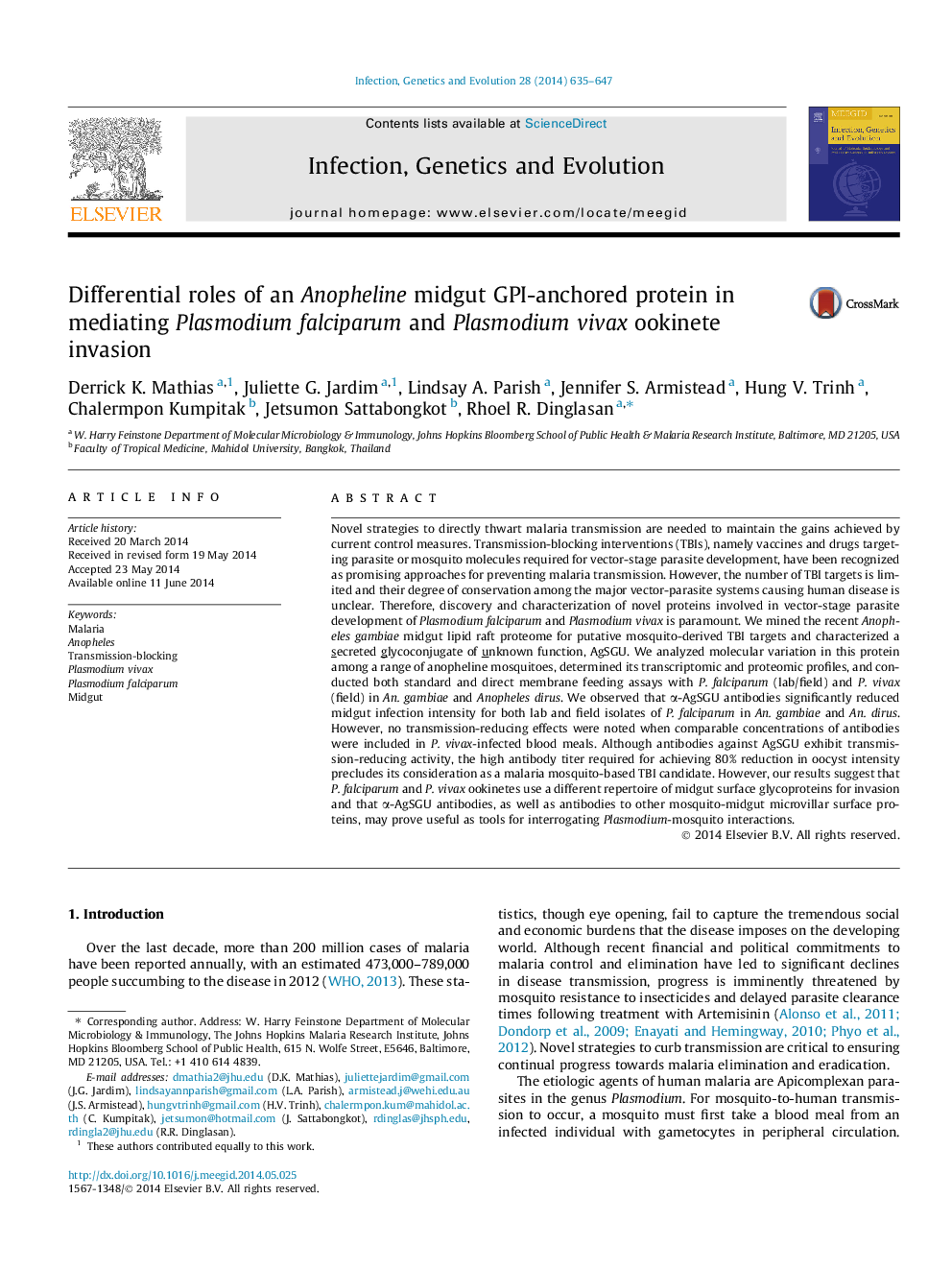| Article ID | Journal | Published Year | Pages | File Type |
|---|---|---|---|---|
| 5909567 | Infection, Genetics and Evolution | 2014 | 13 Pages |
â¢AgSGU, a midgut lipid-raft GPI-anchored protein, is conserved among Old World malaria vectors.â¢AgSGU mediates Plasmodium falciparum invasion in Anopheles gambiae, An. stephensi and An. dirus.â¢AgSGU does not mediate Plasmodium vivax invasion in Anopheles dirus.
Novel strategies to directly thwart malaria transmission are needed to maintain the gains achieved by current control measures. Transmission-blocking interventions (TBIs), namely vaccines and drugs targeting parasite or mosquito molecules required for vector-stage parasite development, have been recognized as promising approaches for preventing malaria transmission. However, the number of TBI targets is limited and their degree of conservation among the major vector-parasite systems causing human disease is unclear. Therefore, discovery and characterization of novel proteins involved in vector-stage parasite development of Plasmodium falciparum and Plasmodium vivax is paramount. We mined the recent Anopheles gambiae midgut lipid raft proteome for putative mosquito-derived TBI targets and characterized a secreted glycoconjugate of unknown function, AgSGU. We analyzed molecular variation in this protein among a range of anopheline mosquitoes, determined its transcriptomic and proteomic profiles, and conducted both standard and direct membrane feeding assays with P. falciparum (lab/field) and P. vivax (field) in An. gambiae and Anopheles dirus. We observed that α-AgSGU antibodies significantly reduced midgut infection intensity for both lab and field isolates of P. falciparum in An. gambiae and An. dirus. However, no transmission-reducing effects were noted when comparable concentrations of antibodies were included in P. vivax-infected blood meals. Although antibodies against AgSGU exhibit transmission-reducing activity, the high antibody titer required for achieving 80% reduction in oocyst intensity precludes its consideration as a malaria mosquito-based TBI candidate. However, our results suggest that P. falciparum and P. vivax ookinetes use a different repertoire of midgut surface glycoproteins for invasion and that α-AgSGU antibodies, as well as antibodies to other mosquito-midgut microvillar surface proteins, may prove useful as tools for interrogating Plasmodium-mosquito interactions.
